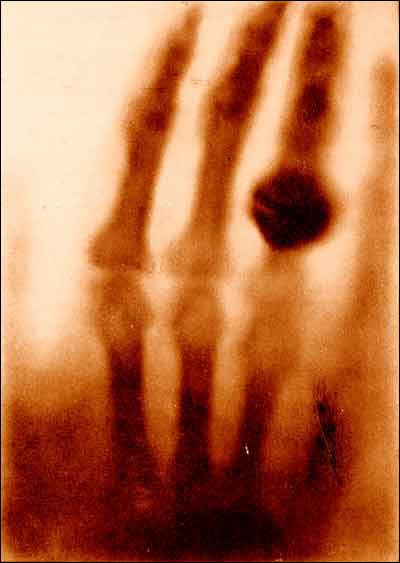This timeline provides an overview of some of major developments in medical imaging.
8 November 1895 – X-rays discovered
X-rays are discovered by German physicist Wilhelm Röntgen. He takes the first X-ray image, showing the skeletal composition of his wife’s left hand.
January 1896 – First use of X-rays
X-ray images are initially a novelty. However, by the end of the year, doctors around the world, including those in New Zealand, are using them.
1946 – Nuclear Magnetic Resonance
American physicists Edward Purcell and Felix Bloch independently discover nuclear magnetic resonance (NMR).
1952 – Nobel Prize
The Nobel Prize in Physics is awarded jointly to Felix Bloch and Edward Mills Purcell for ‘their development of new methods for nuclear magnetic precision measurements and discoveries in connection therewith’.
1955 – Ultrasound for medical diagnosis
Ian Donald, a Scottish physician, begins to investigate the use of ultrasound to diagnose gynaecological patients.
1957 – Fibre-optic endoscope developed
The first fibre-optic semi-flexible gastroscope is patented by gastroenterologist Basil Hirschowitz and co-workers at the University of Michigan.
1958 – Ultrasound research published
Ian Donald publishes his defining paper on medical diagnostic ultrasound. He then turns his attention to the use of ultrasound in obstetrics and in investigating the growth of the foetus during pregnancy.
1960 – First use of endoscope
The endoscope, now in commercial production, is used to examine the stomach of a patient.
1967 – CT scanning conceived
Godfrey Hounsfield, an English electrical engineer, conceives the idea for computed tomography.
Early 1970s – NMR cancer detection
Scientists discover that normal and cancerous tissues produce different NMR responses.
1971 – First CT scan of patient’s brain
The first CT scanner is installed in Atkinson Morley Hospital, Wimbledon, England, and the first patient brain scan is performed on 1 October 1971.
1973 – First MRI images produced
American chemist Paul Lauterbur produces the first magnetic resonance image (MRI) using nuclear magnetic resonance data and computer calculations of tomography.
1974 – PET camera developed
American Michael Phelps develops the first positron emission tomography (PET) camera and the first whole-body system for human and animal studies.
3 July 1977 – First human MRI body scan
The first MRI body scan is performed on a human using an MRI machine developed by American doctors Raymond Damadian, Larry Minkoff and Michael Goldsmith.
3 July 1979 – Nobel Prize
Godfrey Hounsfield and Allan McLeod Cormack share the 1979 Noble Prize for Physiology or Medicine for their part in developing computer assisted tomography.
Early 1980s – MRI in hospitals
MRI scanners are installed in hospitals.
1990s – Prenatal ultrasound becomes routine
Ultrasound becomes a routine procedure in pregnancy to check the baby’s development and to pick up any abnormalities.
2000 – Medical invention of the year
Time Magazine names the PET/CT scanner the medical invention of the year.
2003 – Nobel Prize
Paul Lauterbur and Peter Mansfield share the Nobel Prize in Physiology or Medicine for their pioneering MRI work.
2014 – Human colour X-ray scanner
In September 2014 the University of Canterbury was given $12 million to build the world's first human colour X-ray scanner. Read more about X-ray technology for the future.




